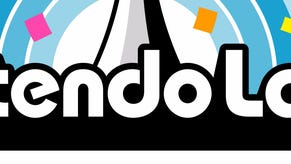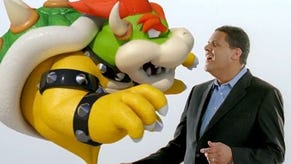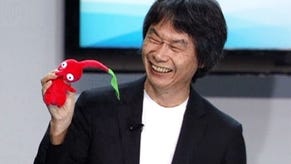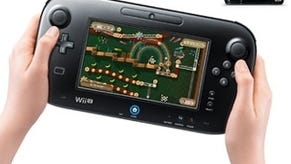Nintendo Land: Roll Up, Roll Up?
Wii U's marquee mini-game collection is good fun, but falls flat at E3.
It all started so well. The charming intro video of Shigeru Miyamoto and his Pikmin moistened the eyes of a few attendees overwrought by all of yesterday's throat-stabbing and dubstep. It heralded a look at a long-awaited and gorgeous sequel, and did our ears deceive us, or was the legendary game designer up on stage actually talking about deep game mechanics? This would be a different kind of E3 press conference from Nintendo!
That wasn't how it panned out, as the traditional weak support from third-parties segued into a dogmatic demonstration of Nintendo Land, the only real surprise of the publisher's Wii U launch line-up. It seemed exactly the kind of casual carousel gamers associate with Wii software, and to say the least, it was not what those people were hoping for. Nintendo's crucial conference petered out to muted applause.
Immediately afterward, the backstage demo for press was just as muted, far from being the buzzing zoo that greeted 3DS' unveiling two years ago. It seemed as if, in hanging its Wii U hopes on Nintendo Land, Nintendo had made a critical error of judgement.
It was naïve, yes, and poor showmanship, but maybe not as foolish as you think and certainly not as lazy. Nintendo's stand on the E3 show floor is absolutely thronged, and it's Nintendo Land that's packing them in.
It's the same dilemma that faced Nintendo with Wii; Nintendo's new console is a strange concept that needs a game to explain it to people, but it has so many facets and possibilities that it can't be explained by a single game. And you have to give Nintendo some credit for at least attempting to foreground gameplay ideas such as asymmetric multiplayer. However, it's also true that Nintendo Land comes off a little unfocused, more Wii Play than Wii Sports, with the conceit of a Nintendo theme park featuring favourite franchises only just managing to tie it together.
With all that in mind, let's look at the five mini-games on show.
Takamaru's Ninja Castle
This single-player shooting gallery demonstrates touch and motion controls on the Wii U Game Pad. You hold the pad flat and in a portrait orientation, like you would to read on a tablet, and flick throwing stars off the touch-screen at cute paper ninjas. You aim a reticule simply by tilting the Game Pad around.
It's highly responsive, and it's fun to play with different speeds of throw, which alter the arcs of the shuriken through the air, and to try to improve your accuracy and timing. The patterns and behaviours of the ninjas are funny and varied. But this is very basic stuff, a Duck Hunt for the 21st century. Next.
Donkey Kong's Crash Course
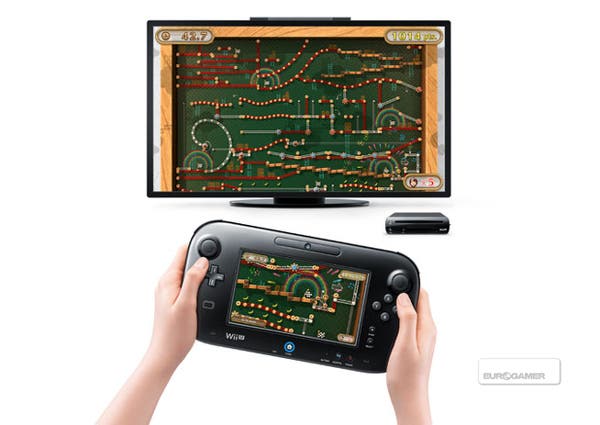
The other single-player game is a real curio, a relatively testing tilt-controlled vertical maze game played entirely on the Game Pad screen. You need to steer a springy cart along tracks, adjusting its momentum to make jumps work or avoid collisions, and using the buttons and sticks to manipulate elevators and carousels. The goal is to reach Peach at the bottom of the maze.
It's all about motion control finesse, in other words, and once again the responsiveness and accuracy of the Game Pad's motion sensors are remarkable and the physics are perfectly tuned. Also, as anyone who's played with the 3DS or Vita's gryoscopes will know, motion control feedback feels much more natural and reliable when the screen is in your hands and part of the controller. Whether Crash Course is any fun in the longer term can only depend on how many mazes there are and what kind of variety and ideas are packed into them.
Luigi's Ghost Mansion

On to Nintendo's big sell with Nintendo Land: asymmetrical multiplayer. This is an idea the company's been playing around with ever since the GameCube/GBA Link Cable, and indeed Luigi's Ghost Mansion closely resembles the brilliant Pac-Man Vs. from those days. In a top-down maze, four players with Wii remotes use torches to hunt down one playing a ghost on the Game Pad. The ghost can see the others on the Game Pad screen, but they have to rely on rumble to tell if he's close by.
Ghost Mansion has exquisite balance and lots of neat design, from the ghost's dash move that makes it visible to the way the torches can revive fallen players as well as damage the ghost. Katsuya Eguchi's attempt to explain these nuances on stage was horribly misguided, but also rather sweet in its hope that he could get a conference crowd interested in actual game systems - and a style of multiplayer game that's not new, but is certainly extremely under-exploited.
Animal Crossing: Sweet Day
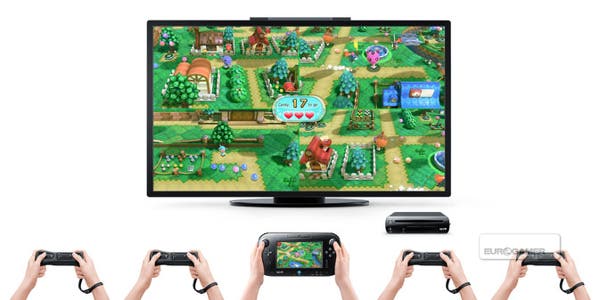
This is rather similar to Luigi's Ghost Mansion, and also the game whose franchise branding seems most randomly tacked-on. On a colourful Animal Crossing map, four remote players need to gather enough candy from trees to win, while avoiding guards controlled by the Game Pad player. The more candy they collect, the slower they run.
The twist is that the Game Pad player can control two guards, one on each analogue stick. It's mind-boggling initially, but with a little practice you learn to use your two guards to push the candy-collectors around the map and perform pincer movements.
Again, Sweet Day is a good laugh, but it doesn't make dramatic use of Wii U's twin screens - just offering the Game Pad player a broader perspective than the split-screen view on the TV - and it's less immediate than Ghost Mansion. It would have been nice to see its slot at E3 taken by something more striking, illustrating a different aspect of the machine.
The Legend of Zelda: Battle Quest
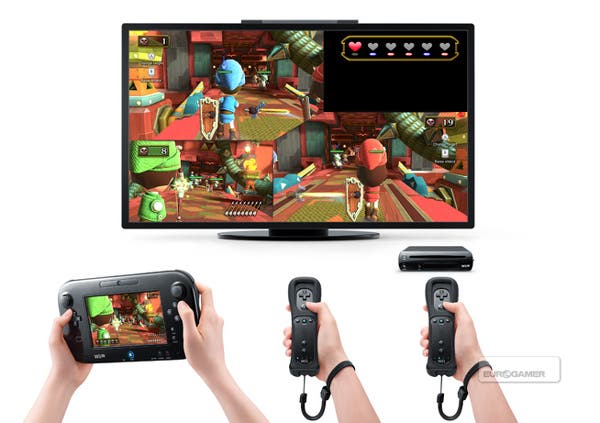
The final demo is a simple but very enjoyable co-op combat game for three players: two swordfighting with Wii remotes, one aiming a bow and arrow with the GamePad. It takes place in a charming patchwork simulation of a Zelda world, with ChuChus and Moblins stitched together from cloth and scenery made of cardboard and wood.
The three players move forward automatically along a path, the two swordsmen in front, swinging their blades in similar combat to last year's Skyward Sword (they can also change target or stop and shield themselves with button presses). The archer brings up the rear, aiming on the GamePad's screen using gyroscopic control as in Ocarina 3D - and firing arrows, pleasingly, by pulling and releasing the right stick.
Like all the games, it's not deep, but it's not shallow either. Despite the lack of direct control over movement, you do need to look out for each other and fight with a modicum of tactics to beat tougher enemies. And of all the games, it's the best realisation of the idea of a virtual ride in a Nintendo theme park - which is the only thing tying this disparate package together.
It's not the game most (any?) Nintendo fans were hanging their hopes on, but in many ways Nintendo Land shows the Kyoto developers at their best: realising new gameplay ideas with clarity, perfecting tactile control schemes and designing with clever restraint.
However, as Wii U's E3 tentpole and potentially its chief launch game, it's a mixed blessing at best. Attendees are having fun with it on the show floor, but it only demonstrates a handful of light concepts, it does so in a fragmented way, and with the best will in the world, it's just not very sexy.
Like Wii Sports, Nintendo Land will be a good game that's unfairly dismissed by many. However, I just can't see it defining a console and changing games as Wii Sports did. Its ideas are too scattered, its selling point too hard to grasp. Perhaps that's also true of Wii U itself - and if so, it could be tough times ahead for Nintendo.



